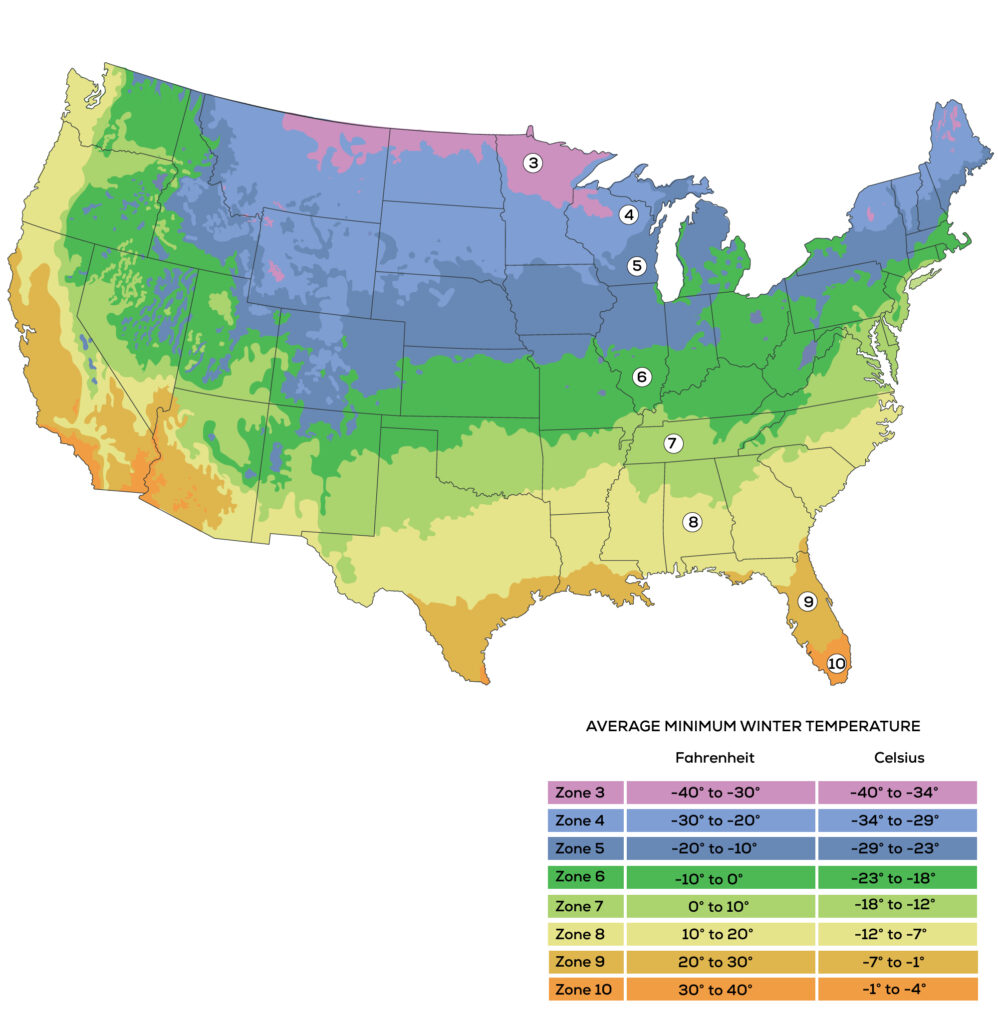November is a busy month in the kitchen garden. Many gardeners would say November is the most important month–now is the time to prepare the soil for next spring and afterward put the garden to bed for the winter. (Of course, winter vegetable gardening can be very rewarding. So if you are continuing the fresh harvest through to February, you should move swiftly to get things growing under cover.)
- November is the time to complete your harvest of late summer and fall crops.
- November is the time to collect leaves, grass clippings, and small bits of brush for adding to the compost pile.
- November is the time to improve your garden soil with organic matter, well-aged compost, and manures.
- November is the time to start a new compost pile and to turn the old one.
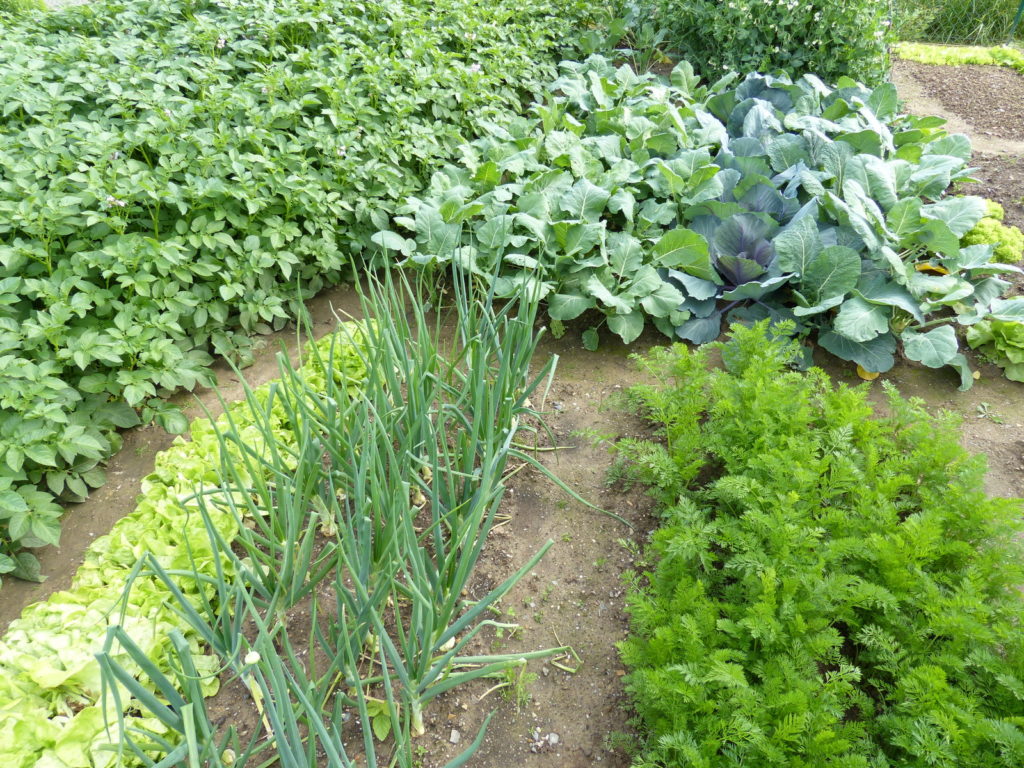
November planting
November planting in the Northern Hemisphere by region:
Cooler northern regions–Zones 3-6: Vegetables: cress, lettuce, shallots, spinach.
Temperate Regions–Zones 7-9: Vegetables: artichoke suckers, broad beans, cress, leek, lettuce, mustard, onion, peas, radish, shallots, spinach, spring onion. Herbs: caraway, chives, hyssop.
Subtropical and Tropical Regions–Zones 10-12: Vegetables: asparagus, beans, beet (beetroot), broad beans, cabbage, Chinese cabbage, cress, endive, lettuce, mustard, onion, spring onion, parsnip, peas, potatoes, radish, shallots, Swiss chard (silverbeet), spinach, strawberry runners, tomato, turnip. Herbs: angelica, basil, borage, caraway, celeriac, chervil, chives, coriander, dill, lemon balm, marjoram, oregano, parsley, salad burnet, thyme.
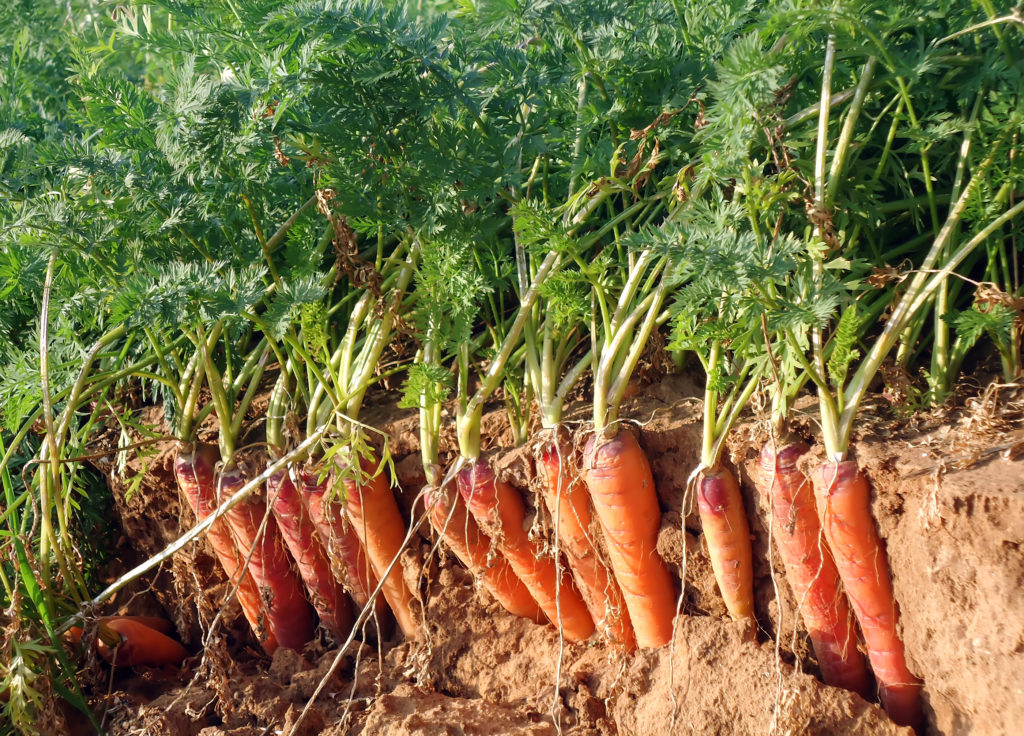
November harvest
The first Mandarin oranges of the season are harvested this month. There are several varieties of Mandarin–some are sweet and some are tart.
Members of the Mandarin orange family include clementine, dancy, satsuma and tangerine.
Most of the Mandarins that come to market are satsumas. But try and find the clementine. It is tiny with a very thin skin. It is seedless with red-orange flesh. Pop it in your mouth for a tangy-sweet treat!
As you head out to the farm market this week, here’s an update on the fresh vegetables and fruits your growers will likely have on hand:
First-of-season harvest: Almonds, celery, kale, hydroponic tomatoes, Mandarin oranges, pomegranates, walnuts.
Peak-of-season harvest: Apple cider vinegars, arugula, beets, broccoli, Brussels sprouts, cabbages, carrots, chard, chilies, chipotles, cilantro, collards, dried fruit, herb starts, kale, kiwi, leaf lettuce, leeks, olive oil, parsley, persimmons, potatoes, pumpkins and decorative gourds, radishes, raisins, salad mix, spinach, squashes (Delicata, butternut, Kabocha, and acorn), sweet potatoes, turnips, walnuts, winter squash, yams. Fresh herbs, including chives, garlic chives, marjoram, parsley, rosemary, Russian tarragon, sage, oregano, and culinary bay leaves.
End-of-season harvest: Apples, apple cider, chestnuts, dill, figs, French tarragon, garlic, guava (pineapple and strawberry), heirloom tomatoes, lima beans, sweet yellow onions, red onions, plums, pears, sweet peppers, new potatoes, raspberries, red flame grapes, strawberries, tomatillos.
Harvest late summer crops. Continue the harvest begun in September and October: cold-weather sweetened carrots, Brussels sprouts (when the buttons firm up), cabbage, and kale. Continue to thin cut-and-come-again crops like lettuce and spinach.
Harvest root crops. Harvest leeks, turnips, rutabagas, kohlrabi, and parsnips as needed. Mulch root crops thickly if you plan to store them in the garden until you are ready to use them; mark their location with tall stakes. Carrots, turnips, leeks, and parsnips can be left in the garden under a one-foot-deep (30cm) layer of mulch and dug as needed all winter. Root crops that are not protected with a layer of mulch including horseradish and sunchokes should be harvested before the ground freezes.
Here is a list of some of the vegetables and fruits that will come to harvest in November: Vegetables: beets (beetroot), broccoli, Brussels sprouts, carrot, celeriac, chilies, Chinese cabbage, corn, kale, lettuce, parsnip, peas, peas, purslane, radish, rutabaga (Swede), spinach, turnips. Fruit: late apples, avocadoes, banana, feijoa, guava, early kiwifruit, kumquat, limes, melons, early mandarins, olives, late Valencia oranges, early navel oranges, late passionfruit, pomegranate, late raspberries, tamarilloes, tangeloes.
Garden tips for November
Seed saving. Seeds from non-hybrid plants can be saved from the garden for planting next year. Thoroughly dry seeds, label them, and store them in a closed jar in a cool, dry place. More on seed saving.
Storing crops. Keep cabbage in a cool basement or unheated garage until needed. Inspect potatoes and other crops in storage; discard any showing signs of rotting or disease. More on storing crops.
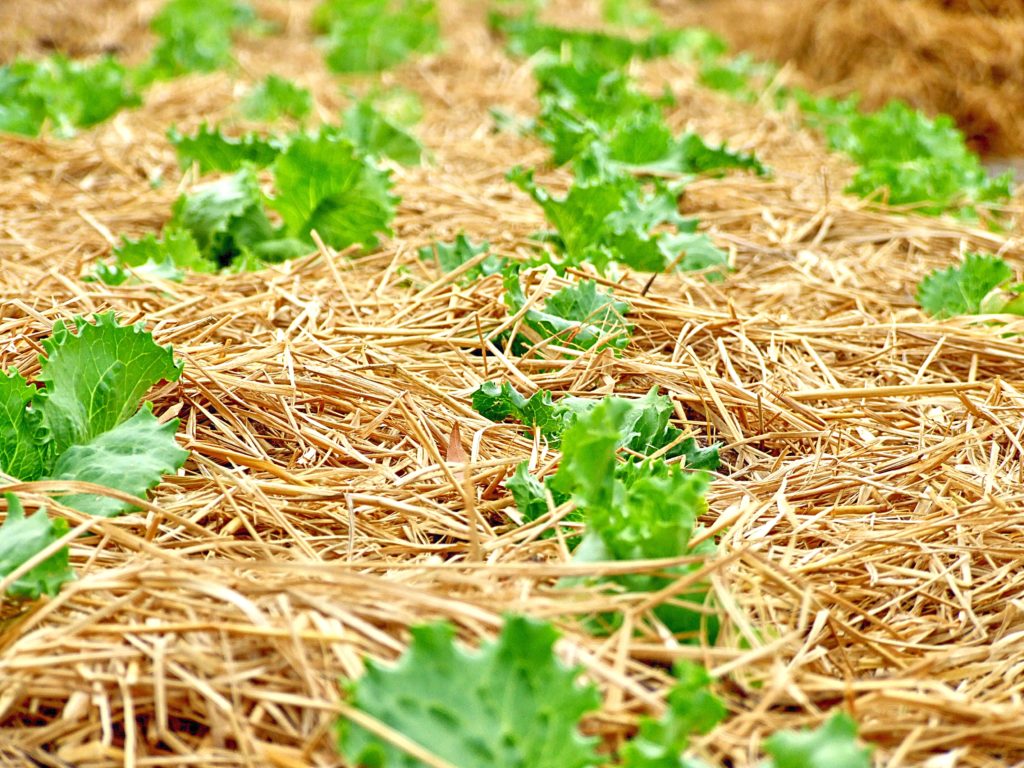
Planting. Sow Asian greens and other leafy crops in cold frame or under cloches. Vegetables that can be planted in the cold frame now include cabbage, endive, kale, lettuce, radishes, onions, spinach, beets, Chinese cabbage, turnips, kohlrabi, mustard, and parsley. In the garden, sow early peas and broad beans in a sheltered spot or under cloches. Set garlic. Sow winter cover crops. Bend the leaves of cauliflower over the curds to protect them from frost damage. Use a cloche to protect them. Bank up celery in the garden for blanching. For more specifics on planting see the Regional list below.
Asparagus. Plant an asparagus bed now. Asparagus is a perennial and should be planted to one side of the garden out of the way of annual vegetables. Plant asparagus crowns 18 to 24 inches (45-61cm) apart, in rich soil. Wait until the third year to begin cutting spears. Add compost to the bed regularly.
Rhubarb forcing. Rhubarb that has grown in the garden for a few years can be dug up, placed in a dark cellar, shed, or cold frame and covered with 2 inches (5cm) of soil, watered, and kept at 50 to 60ºF (10-15.6ºC). In about 4 weeks pink stalks 12 to 15 inches (30-38cm) long can be harvested for about 4 weeks. When the harvest is complete, you can replant the root crown in the garden. Rhubarb that remains in the garden can be protected from the winter cold with a mulch of well-aged manure and straw.
Artichokes. Artichokes are perennial and should be placed 4 to 5 feet (1.2-1.5m) apart. Add compost and well-rotted manure to the planting hole. Roots should be set about 6 inches (15cm) deep.
Witloof chicory. Roots of witloof chicory can be planted in deep pots or boxes of soil, aged compost, and sand in a cellar or shed at about 45ºF (7.2ºC) for winter salads. Harvest when young shoots appear.
Herbs. Harvest herb leaves and seeds. Divide and transplant perennial herbs. In cold regions, clear the herb garden of annual herbs and dig over the soil. Pot up annual herbs to bring indoors for winter use. Place cloches over late-sown chervil and parsley and other herbs still in the garden.
Fruit trees. Plant bare-root fruit trees. Prune back newly planted apple trees immediately after planting reducing side-shoots by one-half. Insert tree stakes before planting and make sure newly planted trees are secure. Water new trees deeply and add a fresh layer of mulch after planting. If you are not planting until spring, heel in trees or store in a frost-free shed keeping the roots moist. More on pruning fruit trees.

Prune established apple and pear trees. Do not winter-prune cherries, damsons, peaches, or plums. Prune out broken, dead, or diseased branches and crossing branches. Apply dormant oil to control over-wintering pests and disease.
Clean up dropped fruit and leaves. Compost leaves and fruit not affected by pests or disease. Place mouse guards, tree wraps, hardware cloth, or chicken wire around tree trunks to protect them from rodents and rabbits this winter. Paint the lower trunks of young trees to prevent winter sunscald. Before the soil freezes mulch trees in a ring 8-12 inches (20-30cm) from the trunk.
Remove nests of tent caterpillars and cocoons attached to branches with a stiff brush or broom. Save the egg masses of the praying mantis. Learn to distinguish between the cocoons of both.
Berries. Prune black currants, gooseberries, raspberries, and brambles after a hard frost. Pruning can continue until late winter. Cut blackberry and hybrid berry canes that fruited this year back to soil level; tie newly formed canes to supports. Prune established black currant bushes by removing old shoots from the center. Shorten the lead shoots of gooseberries and red currants by half and side shoots to 2 inches (5cm). Remove all weak shoots. After pruning, apply a mulch of well-rotted manure or compost.
Strawberries. Mulch strawberries with chopped leaves or fresh pine needles. Reset in the garden or pot runners. If you are planning a new strawberry bed, add leaf mold to the site now. You can start a new bed with runners from established plants. Your old bed should be good for three years, but a new one should be begun each year.
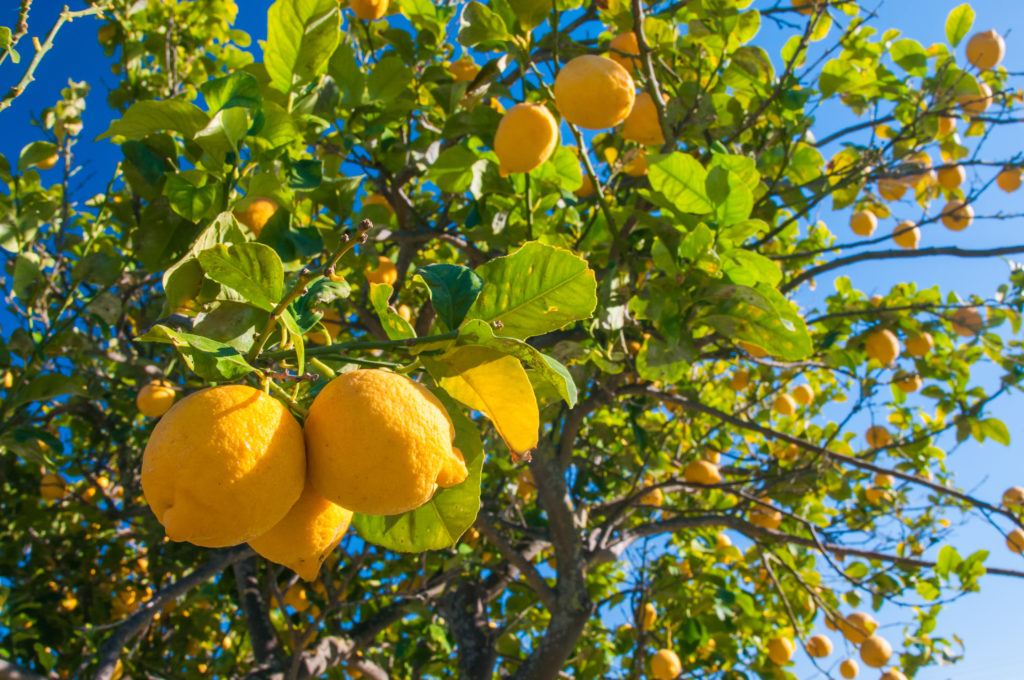
Citrus. Keep citrus fruits well-watered and drape with bird netting if necessary. Harvest will begin this winter.
Prune grapes. Grapevines may be pruned now or in very early spring. Trim vines back to short spurs with 2 or 3 buds, or to several one-year-old canes, leaving a dozen buds on each.
Soil preparation. Test the soil pH now and determine which minerals are lacking; add mineral rock and other soil amendments as needed. If the soil is acidic, add lime. If lacking in nutrients add aged manure, shredded garden greens and leaves, and garden compost now so that they have the winter to decompose. If sheet composting just leave the layer undisturbed, if not fork or till the compost under and leave the garden rough-surfaced until spring. Frost and exposure will help condition the soil.
Season end. Clean the garden, clean and store tomato cages and bean poles undercover. Store hose, coiled. Shut off garden faucets. Make sure there are no leaks in your outdoor storage area and that water does not pool nearby.
Maintaining the garden. Clean up the garden. Compost spent plants. Turn compost and organic material into the garden before the soil freezes. Cover empty beds with a blanket of compost and aged manure. You can also mulch beds with autumn leaves. Allow soil to be broken down by winter frosts, rain, and snow. Turn the compost pile with a fork and water to speed winter disintegration. Note pooling water in the garden that might indicate poor drainage. In regions where autumn and winter are dry, give plants regular, deep water. Where temperatures are consistently below freezing, make sure water pipes in the garden and all outdoor faucets are turned off and drained before the first hard freeze. Takedown trellises and stakes and clean and store for winter. Update crop performance records and begin preparing seed orders for spring. Erect a snow fence or windbreak on the windward side of exposed garden areas where there is no natural protection.
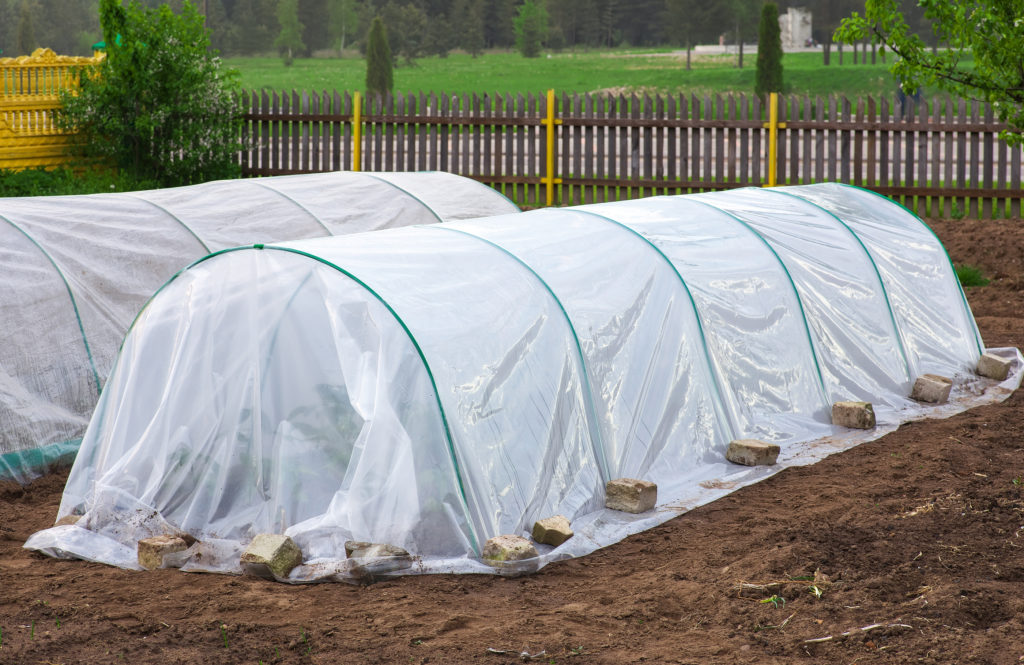
Plastic tunnels, row covers, and cloches. Have plastic tunnels, row covers, and cloches in place for winter growing. You can extend the season by several weeks both in autumn and spring by using plastic tunnels, cold frames, row covers, and cloches to keep plants warm when temperatures dip.
Greenhouse and cold frame. Clean, disinfect, and ready the greenhouse and cold frame for winter. Check insulation to make sure the greenhouse can maintain the minimum temperature. Clean the glass to allow for the greatest winter light. Ventilate the greenhouse and cold frame on mild and warm days; lack of air movement can encourage diseases. Gradually give plants less water so that they will better tolerate low temperatures; disease will also be less of a problem. Check plants regularly to pick off any dead or dying leaves before they start to rot.
Container gardens. Move tender container plants indoors for winter. Half-hardy container plants can go into the cold frame; sink clay pots with plants into the ground. Remove spent plants from containers and compost; clean containers and store for winter.
Tools. Clean and store tool; rub linseed oil on wooden parts to prevent cracking and rotting. Sharpen blades and rub a protective sheen of oil on metal parts. Store tools in a dry place until spring.
Recordkeeping. Complete garden record, for ready reference next year.
November Garden Zone-by-Zone
Here are planting and to-do tips for each USDA growing zone. Find your location and zone on the map and then seed the vegetable and fruit garden tips below.
Vegetables & Herbs
Zones 9b-11: Harvest fall crops. Winter vegetables can be planted: beets, broccoli (seedlings), Italian sprouting broccoli, cabbage (seed or plants), carrots, cauliflower, celery (seedlings), chard, Chinese cabbage, collards, kale, kohlrabi, Romaine and leaf lettuce, mustard, onion sets for green onions, parsley, radish, spinach, and turnips. Plant peas in well-drained soil; Chinese edible pod peas can be trellised like a sweet pea. ‘Telephone’ peas and Windsor beans are excellent winter crops. Continue to water less frequently but deeply if the winter is dry. As needed fertilize, thin, and water crops sown earlier. Pull and compost spent crops and weeds not gone to seed. Dig organic matter into the soil or plant cover crops in empty parts of the garden.
Zone 8-9a: Plant the asparagus bed. Plant cabbage, endive, kale, lettuce, radishes, onion sets, spinach, beets, Asian greens, turnips, kohlrabi, mustard, and parsley in the cold frame. In parts of the Lower South, you may be able to plant beets, cabbage (seeds or plants), carrots, chard, Chinese cabbage, collards, kale, lettuce, mustard, onion sets, parsley, radishes, spinach, and turnips in the garden.
Zones 5-7: Harvest fall crops. Sow Asian greens and other leafy crops in cold frames. Dig root crops or mulch thickly for outdoor storage. Mark root crops in the garden with tall stakes. Carrots, turnips, leeks, and parsnips can be left in the garden under 12 inches (30cm) of mulch and dug as needed all winter. Turn under leafy debris and work compost into the beds. Add lime to the soil if necessary. Takedown trellises and stakes, clean and store for winter.
Zones 1-4: Sow greens in the cold frame if the minimum temperature remains about 50ºF (10ºC) during the day. Update crop performance records and begin preparing seed orders for spring. Be sure the garden is well prepared for winter with mulches in place or piled near the garden for use when the ground freezes. Mulch perennial herbs when the ground freezes. Give the compost heap a final thorough forking and watering to speed winter disintegration. Store tomato and bean poles undercover. Store hose, coiled, and shut off garden faucets.
Fruits
Zones 8-11: Plant fruit trees, berries, and grapes. Water new plants deeply. Stake newly planted trees. Clean up dropped fruit and leaves; compost if healthy. Thin and cut-back brambles. Watch for pests and signs of disease.
Zones 5-7: Clean up dropped fruit and leaves Install mouse guards around tender-barked trees. Wrap trunks of young trees to prevent sunscald. Thin and cut-back brambles after the first hard frost. Stake newly planted trees. When soil freezes, mulch trees in a ring 8 to 12 inches (20-30cm) from the trunk. Thin and cut-back brambles after the first hard frost. Be sure newly planted trees are securely staked.
Zones 1-4: When soil freezes, mulch trees in a ring 8 to 12 inches (20-30cm) from the trunk. Make sure mouse guards, tree wraps, and other winter protection are in place. After the ground freezes, apply a mulch of straw to the strawberries.
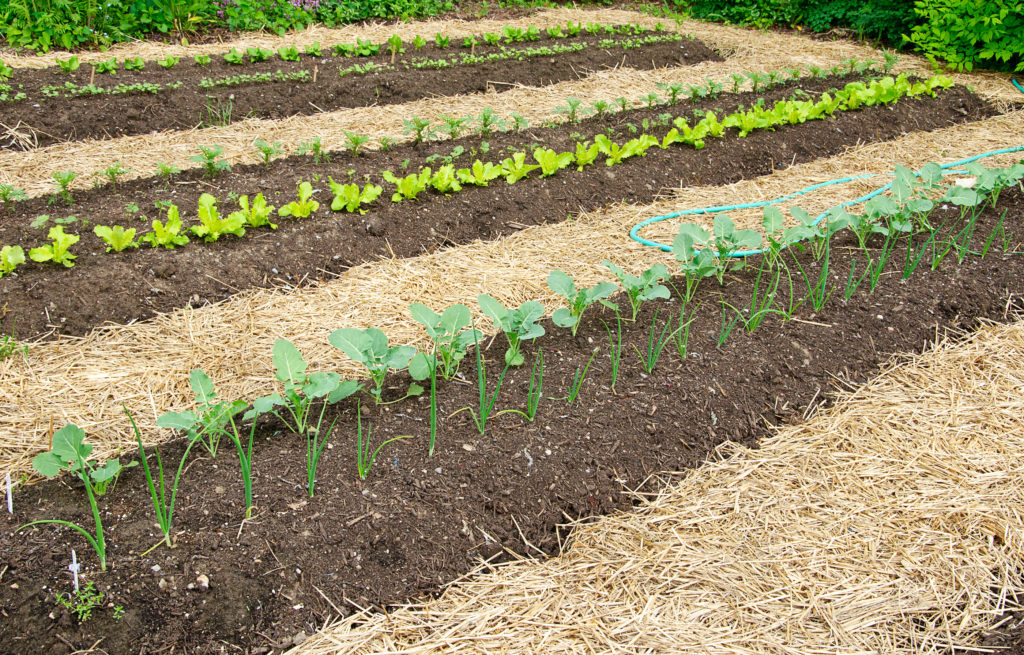
Southern Hemisphere November garden
November is one of the most beautiful months of the year in the Southern Hemisphere. The cold is gone but summer’s intense heat has not yet arrived.
The trees and grass are green. The forsythia and dogwood are in bloom. The birds have built their summer nests, and the first crops in the vegetable garden have begun to sprout.
Here is a roundup of vegetables and herbs to plant in your growing zone this month in the Southern Hemisphere.
November planting in the Southern Hemisphere
Temperate regions: Vegetables: beans, beets (beetroot), cabbage, cape gooseberry, capsicum (sweet pepper), carrots, celery, celeriac, chicory, cress, cucumber, eggplant, endive, leeks, lettuce, marrow (courgette), melons, mustard, spring onion, parsnip, peas, pumpkin, radish rhubarb crown, rosella, salsify, Swiss chard (silverbeet), squash, sweet corn, sweet potato, tomato, zucchini. Herbs: basil, borage, caraway, celeriac, chamomile, chervil, chicory, chilies, chives, coriander, dill, fennel, hyssop, lemon balm, oregano, parsley, salad burnet, thyme.
Tropical and subtropical northern regions: Vegetables: beans, cabbage, cape gooseberry, capsicum (sweet pepper), carrots, celery, celeriac, Chinese cabbage, cress, cucumber, eggplant, fennel, lettuce, marrow, melons, mustard, okra, parsnip, peas, pumpkin, radish, rhubarb crowns, rosella, silverbeet (Swiss chard), spring onion, squash, strawberry runners, sweet corn, sweet potato, tomato, zucchini. Herbs: borage, caraway.
Cooler southern regions: Vegetables: beans, beet (beetroot), broccoli, Brussels sprouts, cabbage, cape gooseberry, capsicum (sweet pepper), carrots, celery, celeriac, cress, cucumber, eggplant, endive, leeks, lettuce, marrow, okra, spring onion, parsnip, potato tubers, radish, rhubarb crowns, rutabaga (Swedes), salsify, Swiss chard (silverbeet), spinach, squash, sweet corn, tomato, zucchini. Herbs: basil, borage, caraway, celeriac, chamomile, chervil, chives, coriander, hyssop, lemon balm, oregano, parsley, salad burnet, thyme.
November harvest in the Southern Hemisphere
Here is a roundup of vegetables and fruits ready for harvest during October in the Southern Hemisphere:
Vegetables: Artichoke, asparagus, beet (beetroot), broccoli, carrot, celeriac, celery, cucumber, lettuce, snow peas, purslane, Swiss chard (silverbeet), spinach, zucchini.
Fruit: Early apricots, early cherries, grapefruit, lemons, limes, loquats, oranges, early nectarines, early peaches, raspberries, and strawberries.
More about November
If Novem is the Latin word for nine, then why is November the eleventh month of the year?
It all started in 46 B.C. when Julius Caesar asked the astronomer Sosigenes to review the calendar and improve it.
Calendars are systems for measuring and recording the passage of time. Nature gives us a regular sequence of seasons. Since nature controls the supply of natural foods, a calendar was one way for humans to prepare for winter with a little forethought.
At first, humans followed the solar year by the changing position of the moon and sun. The first calendar was a lunar calendar that noted the changing position and shape of the moon. That calendar came up about 11 days shorter than the true solar year.
The Romans borrowed their first calendar from the Greeks. The first Roman calendar had 10 months. Julius Caesar worked hard on the calendar. He’s the one who finally settled on twelve months. When that happened, November–which was once the ninth month–became the eleventh month.
Julius Caesar named a new month, July, after himself. The emperor after him Augustus Caesar named August after himself. When the Roman Senate offered to name a month after the next emperor Tiberius Caesar, Tiberius declined and quipped, “What will you do if you have thirteen emperors?”
November originally had thirty days, then the Roman calendar makers changed it to twenty-nine and then to thirty-one. Since the time of Augustus Caesar, November has had thirty days.
November is the month between autumn and winter. It is the month when the last leaves of autumn fall from the trees but the true cold and snow of winter have yet to arrive.
The Anglo-Saxons called November “the wind month”. This is the time of year when there is hazy sunshine and days can turn blustery.


